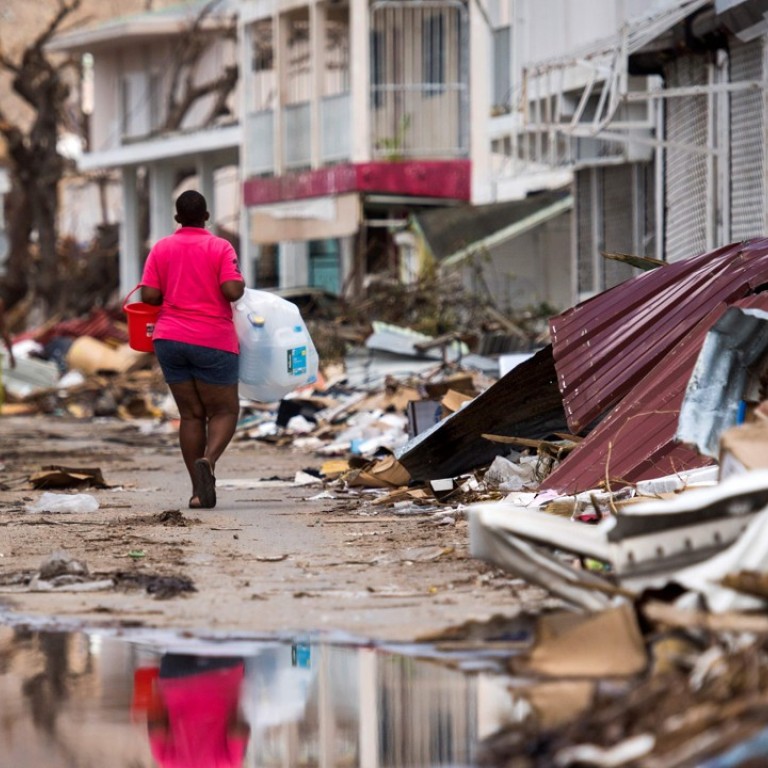
‘We are finding some remains’: authorities search devastated Florida Keys and allow some to return home after Hurricane Irma
Local authorities told about 90,000 residents of Miami Beach and from some parts of the island they could go home
Florida began allowing some residents to return to their homes hammered by Hurricane Irma on Tuesday, but officials warned that it would take a long time to repair the damage wrought by high winds and pounding surf.
At its peak it prompted the evacuation of 6.5 million people, the largest evacuation in modern US history.

Local authorities told about 90,000 residents of Miami Beach and from some parts of the Florida Keys they could go home but warned it may be prudent not to remain there.
“This is going to be a frustrating event. It’s going to take some time to let people back into their homes particularly in the Florida Keys,” Brock Long, administrator of the Federal Emergency Management Agency, said.
He noted that the agency was continuing to rescue people stranded by flooding around Jacksonville, in the state’s northeast.


After leaving a trail of destruction on several Caribbean islands, killing nearly 40 people, Irma caused record flooding in parts of Florida. Only one Florida fatality has been confirmed so far, but a local official said there had been more deaths.
Irma became the second major hurricane to make landfall in the United States in a little more than two weeks when it roared ashore on Key Cudjoe as a powerful category 4 storm on Sunday. It followed Hurricane Harvey, which ploughed into Houston late last month, killing about 60 and causing about US$180 billion in damage, largely through flooding.
More than two months remain in the official Atlantic hurricane season. The National Hurricane Centre is monitoring another hurricane, Jose, which is spinning in the Caribbean, currently about 1,130km from the mainland.

US aircraft carrier Abraham Lincoln was sent to Florida’s east coast and two amphibious assault ships will were expected arrive later on Tuesday to help in the Keys. The military will distribute food and help evacuate 10,000 residents who did not leave before the storm.
Monroe County Commissioner Heather Carruthers said on Monday that people had been killed in the Florida Keys, where nearly 80,000 permanent residents live, apart from one already known fatality. She did not have a count on how many.
“We are finding some remains,” she said.
Video footage of the islands showed homes torn apart by sustained winds of up to 210km/h.
Several major airports in Florida that halted passenger operations because of Irma began limited services on Tuesday, including Miami International.

The centre of Irma moved into Alabama on Tuesday and was then forecast to head into western Tennessee by Tuesday night.
Miami Beach began to allow residents to return home from 8am on Tuesday, its mayor said, with more evacuation orders expected to be lifted. Monroe County opened road access for residents and business owners from Key Largo, the main island at the upper end of the Florida Keys chain. No timetable was given for the reopening the remainder of the Keys.

While the total damage remained unclear, insured property losses in Florida from Irma were expected to run from US$20 billion to US$40 billion, catastrophe modelling firm AIR Worldwide estimated.
Utilities reported about 7.4 million homes and businesses were without electricity in Florida and neighbouring states, and said it could take weeks to fully restore service.

But the scope of damage in Florida and neighbouring states paled in comparison with the devastation left by Irma in parts of the Caribbean, where it razed islands and killed nearly 40 people.
French President Emmanuel Macron arrived in Guadeloupe on Tuesday, the first step of his visit to French Caribbean islands hit by the storm. Macron was expected to meet rescuers and local authorities to discuss aid for nearby St Martin and St Barts islands. He is then expected to visit the islands.
Meanwhile, British Foreign Secretary Boris Johnson was travelling to the Caribbean to oversee British aid to the British Virgin Islands and to Anguilla.
Britain has already sent more than 700 soldiers and 50 police officers to the islands to help restore order.
Reuters, Agence France-Presse, Associated Press
